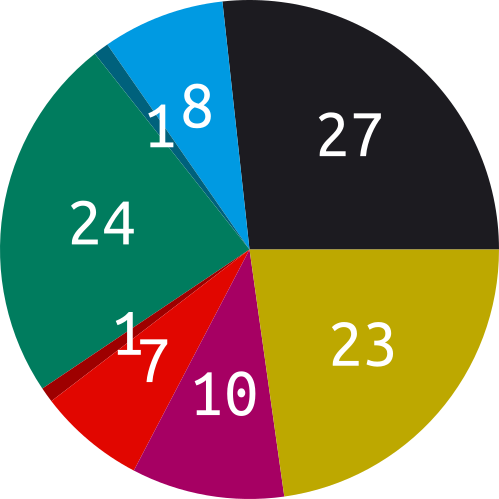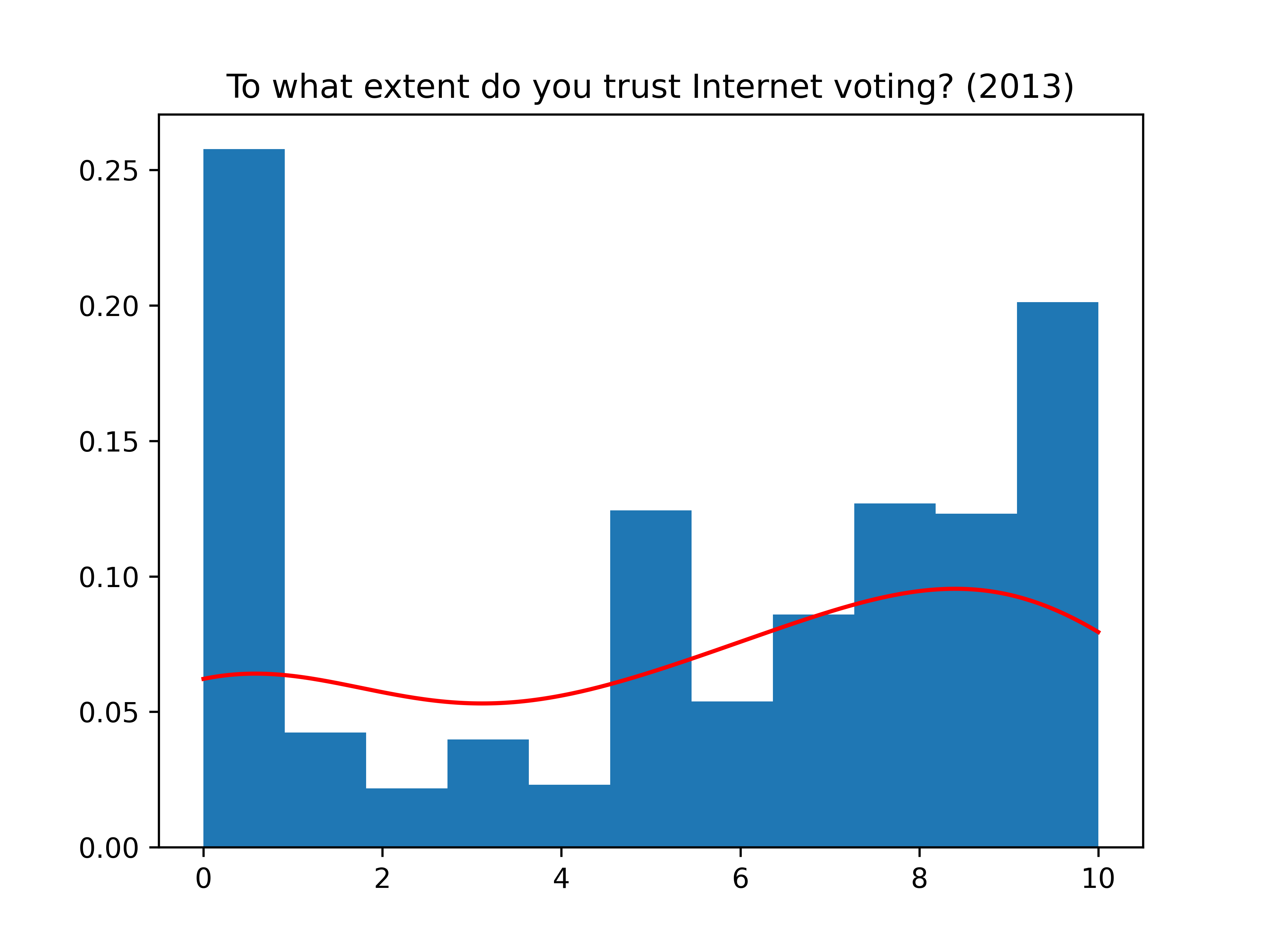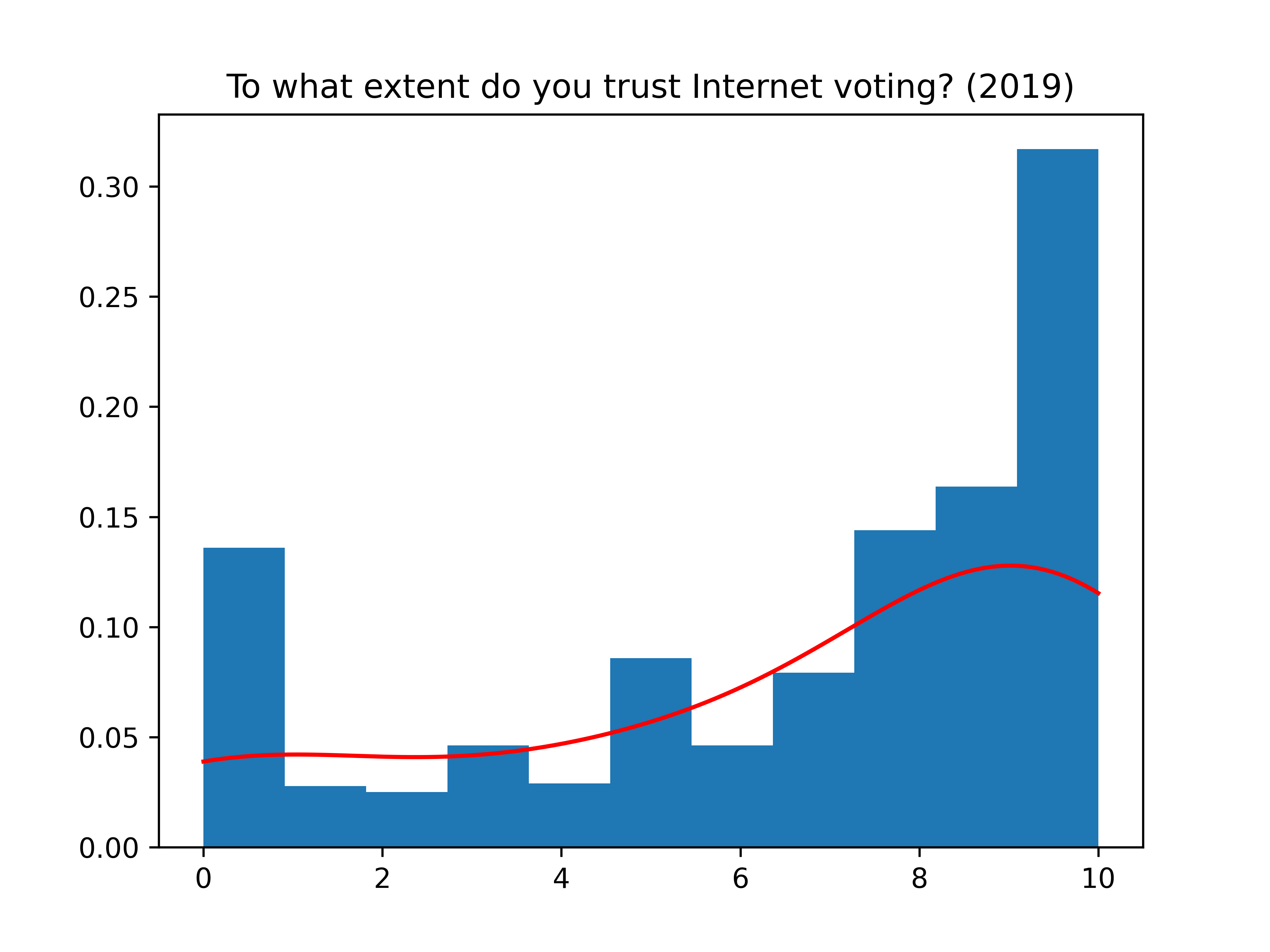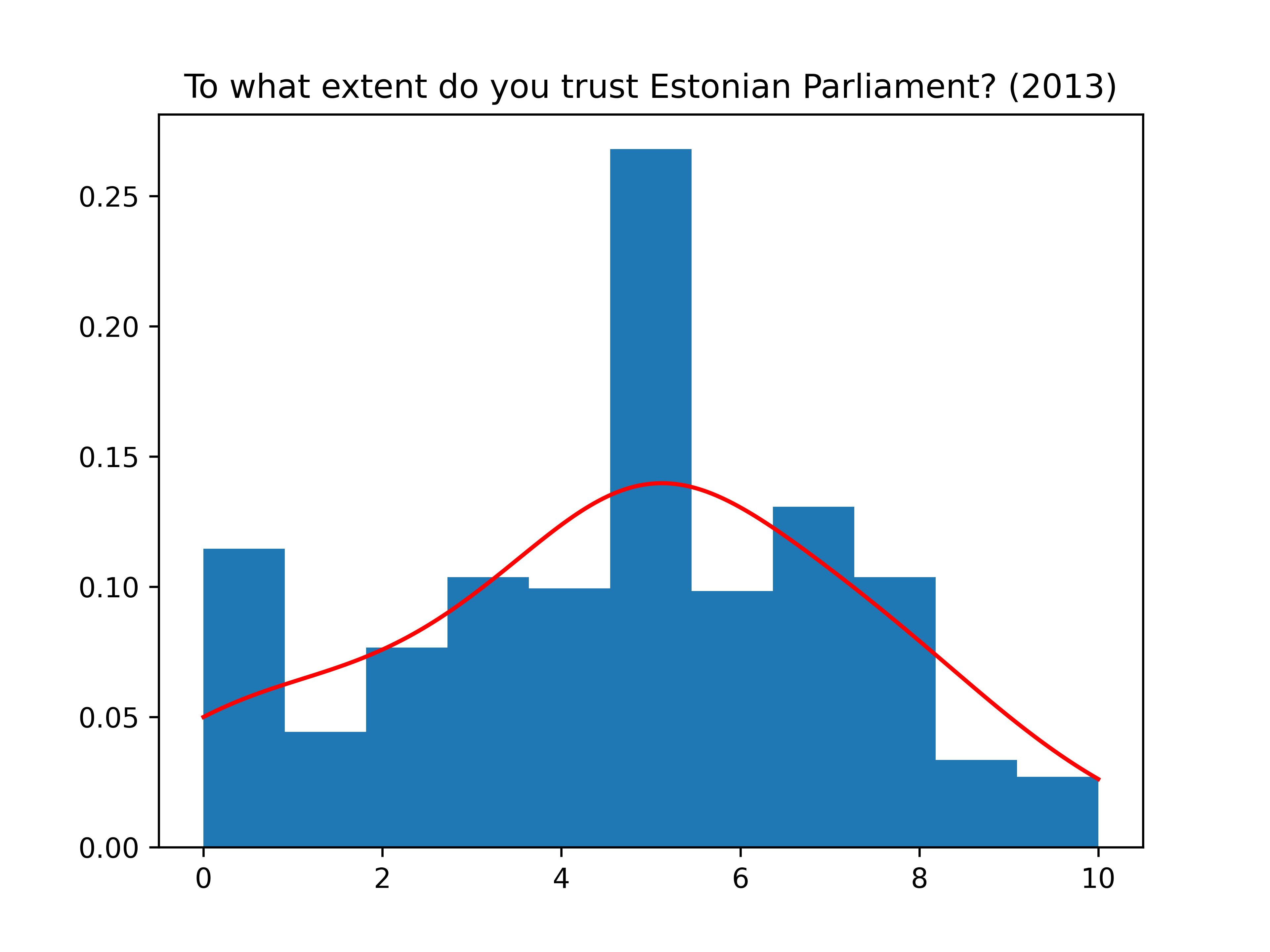Digital divide in Estonian election results
Despite near equal usage of e-voting and paper ballots in 2023, the results for different voting methods were as from different worlds. There is a huge popular demand to fix the problems with Internet voting, but very little agreement on what do they consist of.

Since introducing Internet voting in 2005 every election has been accompanied by high hopes of people finally accepting the new voting method. In reality the trust in electronic voting goes up and down through elections and nowadays hardly anyone believes in mantra of electronic voting not giving advantage to any of the parties. Not after this election.
During parliamentary elections 2023 amount of participating voters increased from 565 045 to 613 801. This is a huge 5% increase in voter turnout from 63.7 percent to 68.9 percent and is somewhat hidden behind changed methodology of counting eligible voters from abroad in official statistics which misleadingly states turnout still staying around 63%.
As you may read from the report above, National Electoral Committee (NEC) didn’t expect this increase, but conjectured that “turnout figure is likely to fall”. Unexplained influx of new voters later effectively became part of allegations of an election fraud by Conservative People’s Party (EKRE).
 and [two personal mandates for East-Viru County](https://news.err.ee/1608916715/erik-gamzejev-what-will-we-do-with-ida-viru-county)](https://gafgaf.infoaed.ee/images/2023_pre2.png)
Already when counting of the votes was hardly started, EKRE leader Martin Helme stated that if huge amounts of new voters reported are electronic, their party will doubt the results, because there can be no proof that those voters are real persons and rather not a sign of an election fraud.
About up to point where 45 percent of votes were counted, they were all paper ballots and stated firm win for EKRE with about 25 percent of the votes, followed by Reform Party (REF) with 20% and Centre Party (KESK) with 19%. After first waves of joy and congratulations among conservatives, the tables completely turned when electronic votes came in about half an hour before midnight.
From that moment on Reform Party was winning with 32%. This is also more or less the result as we know it and as formally acknowledged by NEC on March 30th after most of the election complaints were discussed (or rather dismissed).
Two separate worlds
There are various ways to discuss the statistical nuances behind the election results, but comparing the acquired parliament seats according to paper ballots and electronic votes offers a robust enough insight into the core of the issue.
| Paper ballots | Electronic votes |
|---|---|

|

|
Estonia according to 313 181 electronic votes is very much united in support of Reform Party and boosting the newcomer the to parliament Estonia 200 (EE200). Paper ballot voters want to see more diversity in parliament and are willing to let the controversial then United Left now Together candidate Aivo Peterson as well as expelled Centre Party candidate Mihhail Stalnuhhin (running as independent) into the parliament.
Results according to paper ballots put conservative EKRE first and make ethnically egalitarian Centre Party gain significantly. One might rightfully say results according to paper ballots are more conservative and give more support to local Russian minority. It also appears that in case only paper ballots were counted, 22 current members of parliament would be removed, the same amount for e-votes is 17. Exactly 62 representatives of 101 are elected in a somewhat stable manner.
| Removed by paper ballots (22) | Elected in both worlds (62) | Removed by e-votes (17) |
|---|---|---|
| Anti Haugas, Züleyxa Izmailova, Mario Kadastik, Meelis Kiili, Mait Klaassen, Katrin Kuusemäe, Hanah Lahe, Priit Lomp, Irja Lutsar, Tiit Maran, Eero Merilind, Liisa-Ly Pakosta, Pärtel-Peeter Pere, Õnne Pillak, Valdo Randpere, Maido Ruusmann, Luisa Rõivas, Andrus Seeme, Pipi-Liis Siemann, Margit Sutrop, Peeter Tali, Igor Taro | Jaak Aab, Annely Akkermann, Yoko Alender, Anti Allas, Vadim Belobrovtsev, Rain Epler, Kalle Grünthal, Martin Helme, Helle-Moonika Helme, Mart Helme, Lauri Hussar, Aleksei Jevgrafov, Karmen Joller, Raimond Kaljulaid, Siim Kallas, Jaanus Karilaid, Ester Karuse, Erkki Keldo, Liina Kersna, Tanel Kiik, Signe Kivi, Toomas Kivimägi, Aivar Kokk, Eerik-Niiles Kross, Urmas Kruuse, Helmen Kütt, Ants Laaneots, Lauri Laats, Maris Lauri, Jürgen Ligi, Tõnis Lukas, Andres Metsoja, Marko Mihkelson, Tõnis Mölder, Eduard Odinets, Jevgeni Ossinovski, Heljo Pikhof, Evelin Poolamets, Henn Põlluaas, Juku-Kalle Raid, Mati Raidma, Reili Rand, Jüri Ratas, Marek Reinaas, Urmas Reinsalu, Helir-Valdor Seeder, Priit Sibul, Riina Solman, Grigore-Kalev Stoicescu, Timo Suslov, Andres Sutt, Aivar Sõerd, Kadri Tali, Tarmo Tamm, Tanel Tein, Hendrik Johannes Terras, Urve Tiidus, Vilja Toomast, Toomas Uibo, Kristo Enn Vaga, Jaak Valge, Kristina Šmigun-Vähi | Arvo Aller, Enn Eesmaa, Ants Frosch, Andre Hanimägi, Maria Jufereva-Skuratovski, Kert Kingo, Rene Kokk, Andrei Korobeinik, Anastassia Kovalenko-Kõlvart, Leo Kunnas, Alar Laneman, Mart Maastik, Siim Pohlak, Anti Poolamets, Kersti Sarapuu, Aleksandr Tšaplõgin, Varro Vooglaid |
The fact that electronic votes give different results compared to paper ballots is common knowledge and the general direction of those differences is well anticipated. For example, election night TV show of Estonian public broadcaster was explicitly waiting for electronic votes, that will “change everything”. However, the extent of that effect is neglected and probably downplayed by researchers claiming that electronic voting does not give advantage to any of the parties (pp 142-162).
This is most probably issue to be filed under principle of uniformity of elections, which was the focus of the first petition to declare electronic voting unconstitutional in 2005. The petition was dismissed by Supreme Court and was most probably based on intuition, that electronic voting creates unfair advantage to some social groups, like those making use of computers.
Although misguided about the unwanted consequences of recasting your vote multiple times, it is hard to argue with the intuition itself, because there would be no point introducing electronic voting if it did not change anything. Following years of extreme polarisation and controversy only prove that it as an important political issue and possibly a real game changer.
Question of trust
Although first reports by scientists went to claim that there is almost full trust in Internet voting after 2005 and 2007 elections, this episode of wishful thinking was later corrected. In fact the trust has never adjusted to level of normal trust curves as you can see from survey data of Estonian Internet voter study 2005-2019 by Johan Skytte institute.
Trust varies through dozen elections taken place since electronic voting was introduced, year 2013 is an example of very distrustful year and 2019 is the year when updates to voting protocol were introduced, but were yet to be fully implemented. Through years the general trust levels have been increasing and decreasing in relation to public debates happening, but also comparing the trust in different institutions shows that Internet voting has remained the most controversial of the trust issues polled.

Although the polarisation is visually detected from diagrams above, the same data can be fed to algorithms detecting polarisation. Using the popular Sarle’s bimodality coefficent gives a very disruptive view suggesting that polarisation might have been growing after 2013. Van der Eijk’s measure of agreement that is used on the diagram displayed above gives a more modest result, which better fits the intuition that controversy has become more latent after 2013.
The results of survey from 2023 have not been published yet, but EKRE commissioned a similar survey to prove their point after contesting electronic voting results. The results of a poll conducted by Norstat suggest moving towards situation similar to 2013, when trust was very low and polarised.
 commissioned by Conservative People's Party](https://gafgaf.infoaed.ee/images/trust-ekre2.png)
Maybe the main point is not even that the trust in Internet voting is unbearably low, but that of the fundamental misguidedness of the objective “to create trust”. The claims that electronic voting is more secure than voting on paper ballots or trying to ban campaigns against electronic voting are just some examples of this frenzy, that is still very much existent.
It seems that despite the facts about spread of electronic voting around the globe the majority of Estonian officials do not even consider the possibility that the ones being mistaken about the benefits of electronic voting might be themselves and not the rest of the whole world.
In practice this autosuggestion translates to a mantra of an uninformed public not understanding electronic voting and always needing more explanation.
Mantra of explaining more
This is an all encompassing rhetorical position from election officials to Supreme Court court judgments (see 5-23-20 p 82, summarised in English here), but often just boils down to a biased political indoctrination. We may try to explain this using a thought experiment about thunderstorms and heavy rain on election day, which make walking to polling station to cast a paper ballot almost a heroic act. Would we admit that 50 percent of the voters using electronic channels had an advantage?
Estonian officials probably would like argue that 50 percent of voters could have overcome heavy weather conditions by casting their votes electronically and that they are themselves responsible for their inactivity that lead to failure to participate in elections. Yet this argument seems intuitively wrong for quite many reasons, but to even consider it being right requires a hard belief that those who do not trust to cast their votes electronically do it for irrational reasons.
This presumption is plain wrong, but yet it thoroughly manifests also in the work of the scientists by the same Johan Skytte Institute of Political Studies that is responsible for the survey data above. The whole last paragraph on “Internet voting and partisan politics” of their scholarly overview of electronic voting in Estonia 2005–2019 is based on presumption that criticisms of new voting method are based on unacceptable political motives or even conspiracy theories.
There are very legitimate reasons for contesting electronic voting in general and even more the manner it is implemented in Estonia. It might well be that “explaining more” mantra authentically expresses the perplexity the NEC officials, Supreme Court members etc are in, when they need to process the appeals in couple of days needing to understand the technicalities of the system involved. This problematic is described also in diverging opinion of Chief Justice Villu Kõve in case 5-23-20 referred above.
However, contrary to presumable goal of “explaining more” the experience of actual observers of electronic voting is that knowing more rather makes you trust less and is hardly a remedy to polarisation, which probably has much deeper reasons.
Was there an election fraud…
Conservative leader Martin Helme in his claims of election fraud is right to observe that all 48 756 new voters in 2023 were electronic voters. This is a reasonably true statistical abstraction.
However his allegations of thousands of electronic votes being directly added to Reform Party leader Kaja Kallas remain rather unsubstantiated, if we join Martin Helme in agreeing that paper ballots remained free of manipulation. This is simply because the amount of electronic votes increased quite proportionally to paper ballots for all major parties namely 8.6% for Estonia 200 (EE200), 8.4% for Centre Party (KESK), 7.5% Social Democrats (SDE) and 7.4% from Reform Party (REF), Fatherland (ISAMAA) losing 1% and Conserative People’s Party (EKRE) itself 5.5%.
 also for 2023 voters, EKRE is represented as successor to [People's Union](https://en.wikipedia.org/wiki/People%27s_Union_of_Estonia) and you can find larger diagram with absolute amounts [here](/files/ee-pol-skyline2023.pdf).](https://gafgaf.infoaed.ee/images/skyline2023.png)
Also Kaja Kallas’ own result consisting of 31 816 votes with 23 043 or 72.4% of them electronic is above REF average of 67% votes elecronic, but still nothing very special. With this percentage she is on 13th position among candidates above 1000 votes level, among them two from EE200 and two from SDE. In 2019 the amount of votes for Kaja kallas was 20 072 and 12 843 or 63.9% of them electronic, which means remarkable, but still acceptable 8.5% rise.
 might seem to have something to do with increased turnout (the sharp cut in top right green area)](https://gafgaf.infoaed.ee/images/coalition2023.png)
The sharp polygons representing the gain of electronic votes for EE200 and REF certainly catch the eye and the combined gain for the liberal coalition of E200, REF and SDE visually seems to fit the polygon of new voters (compare also to larger diagram), but is nothing suspicious in itself. The proportion of the gain is basically same for SDE and even KESK, for which despite altogether losing 7.8% of votes, the proportion of electronic votes rose 8.4% which is on the same level that of EE200.
But it is true that we still do not have any means to rule out the possibility that electronic votes were added to EE200, KESK, SDE and REF gaining 7-9% in a coordinated manner, at the same time by some proportion removing electronic votes from EKRE and maybe leaving ISAMAA untouched.
And not only we don’t have means to rule out the possibility, but there is no way to meaningfully investigate it. NEC despite stating willingness in public in practise refrained from all recounts demanded by either political parties or individual observers. In addition even according to official audit commissioned by themselves they failed to follow the legally defined procedures for the first tally and only partially conducted the second tally meant to assure the validity of the first.
…or just digital gerrymandering?
EKRE leader additionally backs his claims about election fraud referring to opinion polls artificially made to surge for the election day, but most likely we will not find any hard proof of the fraud until there will be a whistleblower among NEC and team members. If that ever happens, is hard to say, but until then looking back at the history of electronic voting one could easily see traits similar to manipulation called gerrymandering.
In Estonia electronic voting was not introduced in a responsible step by step manner with a broad parliamentary support and it has never been a neutral voting method among others. The issue was politically polarised from the very beginning, when then People’s Union, now Conservative People’s Party opposed introducing it and Centre Party some time after 2007 elections started to campaign for discontinuation.
At the same time it has been very useful especially for Reform Party to pretend that electronic voting is neutral and under that pretence use government resources, cooperation networks and of course NEC itself to campaign for more electronic voters. In a sense every election at least from 2011 has been also an implicit referendum on electronic voting with a clear front of Reform Party and its various coalition partners supporting the new voting method, resulting REF leading with 68% of votes electronic for 2023, EKRE at 28% and KESK at 31%.
Arguably it stands, that if you get someone to cast an electronic vote, there is somewhat higher probability that it is for any of the parties supporting Internet voting. This applies to hesitating voters and probably also to our 48 756 new electronic voters. In fact all new voters since 2007 have been electronic, but there has never been 5% rise in turnout.
In these elections this rise in turnout is the actual thunderstorm from our thought experiment above, although we have had this storm present and rising from the first Internet enabled election. As for the usual gerrymandering the tactics for its digital counterpart is to manipulate borders of constituencies to gain more support. In case of electronic voting you do not directly change the borders of districts, but use government resources to pull more voters into the special district of Internet voting, which in case of Estonia is indeed a whole separate world operated by State Electoral Office (SEO).
Problem waiting to be solved
According to post election poll 86 percent majority of people want to see problems with electronic voting solved, the main disagreement seems to be if our Internet voting is broken beyond repair (24%), should be stopped until the problems are fixed (19%) or should we let people vote electronically while trying to fix the problems (43%).
 commissioned by Conservative People's Party](https://gafgaf.infoaed.ee/images/ekre-what-to-do.png)
But there seems to be also very little agreement on what exactly needs to be fixed and what is the problem we are talking about.
Supreme Court in their “main account” remains rather quantitative stating that more regulation needs to be written into laws rather than subordinate acts. Chief Justice in his diverging opinion agrees, but adds that constitutional review at least about roles and responsibilities of NEC and SEO should be initiated, also suggesting to rethink the legal process of complaints and appeals to fit the needs of electronic voting. The joint statement by observers of electronic voting demands “electronic voting to be rendered meaningfully observable” and proposes five specific legal and procedural changes.
Chancellor of Justice whom Chief Justice expected to initiate a constitutional review on social media immediately refused to do it, later repeating the same in front of parliament. President of Estonia during the first session of new parliament, expressing his agreement to Chief Justice underlines that “everything of importance pertaining to the organisation of electronic elections must be set out in law”. Conservative People’s Party during first parliamentary sessions referring to problems with constitutionality submitted a draft bill to discontinue electronic voting altogether, prime minister Kaja Kallas at the same time explaining that she might have overlooked Supreme Court suggestions in 2019 and will appoint minister of justice the task of legally clarifying the processes of electronic voting.
Ministry of Justice indeed has formulated legislative intent to clarify the processes, but stays on the level of moving some subordinate regulative acts to election law and not mending any processes. In the background Estonian Academy of Sciences has reorganised a cyber security working group mostly consisting of cryptography experts related to Cybernetica AS that has been creator and developer of Estonian electronic voting to start discussing voting security topics from August 2023.
In fact in the coalition agreement of current government only thing related to electronic voting is enabling it on smartphones, which very much in spirit of digital gerrymandering described above sets stage for gamifying the next level of electronic voting with a new trophy – being the first country to vote on mobile devices. Currently only feedback to legislative intent referred above is a comment by Minister of Economic Affairs and Communications reminding that goal set in coalition agreement.
This is not second part of my observer report, which is in fact still pending. You can get a glimpse of it from slides of a presentation for Tartu Hackerspace, but the general conclusion will be that since NEC failed to meaningfully process even quite simple, but serious irregularities, any real manipulations for sure would have been or were left undetected not only by observers, but also by people running the election servers themselves. As I am responsible for the petition of observers of electronic voting, I will publish missing parts of the report before presenting our proposals at the parliament. All the data in this post is either scraped (2007, 2011, 2015, 2019, 2023) or downloaded from NEC elections site, statistical data is from Estonian Internet voter study 2005-2019 by Johan Skytte Institute and 2023 post election poll by Conservative People’s Party.



